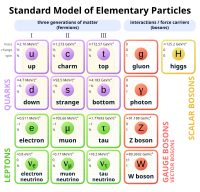
Photo from wikipedia
Medical physics is an applied science, with subspecialties in radiation therapy, imaging, nuclear medical physics, and medical health physics (radiation protection). Examples of applications heavily dependent on medical physics expertise… Click to show full abstract
Medical physics is an applied science, with subspecialties in radiation therapy, imaging, nuclear medical physics, and medical health physics (radiation protection). Examples of applications heavily dependent on medical physics expertise include the delivery of external-beam radiotherapy and radioactive-seed therapy, computed tomography (CT) and magnetic resonance imaging (MRI), and radiation protection of patients, staff, and the general public within the medical environment. In addition, medical physicists play important roles in the discovery, research and development, and translation of new technologies to clinical practice. Predicting the workforce needs for medical physics is challenging because of limited data availability, unpredictable resource allocation processes, and other factors. In-line with other radiation professions considered in special issue, the domestic medical physics workforce is experiencing a wave of retirements of baby boomers and a chronic decline in support for programs that educate and/or train replacement workers.
Journal Title: Journal of Applied Clinical Medical Physics
Year Published: 2022
Link to full text (if available)
Share on Social Media: Sign Up to like & get
recommendations!